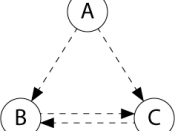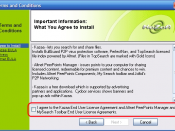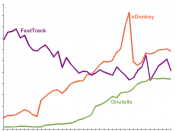Shevon S. Licorish
Elements of the Kazaa case study that are indicative of the E-commerce I era:
Technology driven - relies on a software program known as fast track.
Ungoverned - file-swapping services pay no copyright fees to the owners of the copyrighted materials. Instead, they claim that they are not responsible for the way millions of people use their software. These p2p's are being headed in places where there are no laws to govern them, or go by (Estonia, Vanatu etc.)
Perfect markets - according to where Kazaa is based and the laws that are not present, they have the ability to "do as they please" hence having a perfect market in file-swapping.
E-commerce II era:
Business driven - â¦under Sharman Networks, Kazaa has blossomed into an advertising network reaping millions of dollars of revenue from mainstream clients such as Microsoft, NetFlix, and DirecTV. Also, the music available on Kazaa functions as a draw to a huge internet audience.
Earnings and profit emphasis - â¦establishing a parallel network called Altnet, which is based on the same fast track software but uses a pay-for-download business model where legitimate copyright owners offer their films and music for a fee.
�
Kazaa makes money by acting as an advertising network and has also developed a parallel network called Altnet that uses a pay-for-download business model. In order to make money, Kazaa loads fast track with so-called "spyware" and "adware" programs which in turn go out on the internet and request pop-up advertisements and unsolicited emails from vendors who pay for this service. In that sense, fast track is an "advertising network" that makes money not from selling music, but from selling to advertisers' access to its 65 million users.
Kazaa falls into the Peer-to-Peer, P2P category and Customer-to-customer in my opinion.


